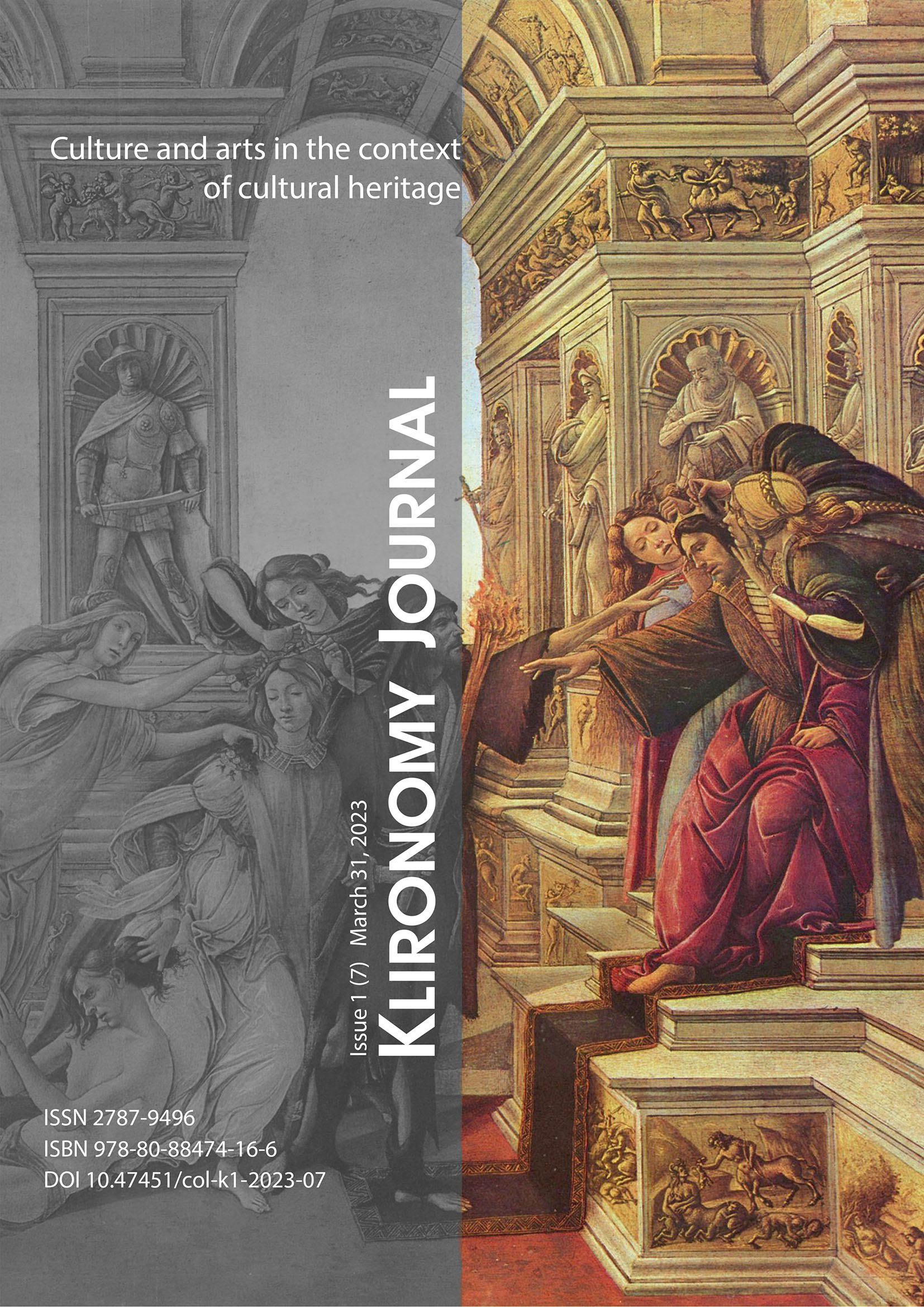Elements of the Romanian Mythical Space in Advertising
DOI:
https://doi.org/10.47451/art2023-03-01Keywords:
mythology, archetype, advertising, heroes in advertising, design, contemporary artAbstract
For design, the myth is a source that creators turn to in order to translate into everyday life those ideas that we have genetically implanted in us and to which we feel a call or to which we refer at certain times. The myth is for every society an identity known by the vast majority, which is why it is used in design either to repeat the primordial acts of the ancestors unconsciously, or consciously to make connections between the newly created object and the mythological one, which is it ensures credibility, security and success, and, in addition to these, an emotion coming from a more or less profound experience. In order to achieve the research goal and solve the tasks set, the authors conducted quantitative studies and comparative studies concerning the main characteristics of the myth, taking several primitive myths and observing their search in modern times through their use in the advertising sphere. The research used the works of researchers Mircea Eliade, George Călinescu, Mădălina Moraru, Romulus Vulcănescu, Doina Graur. The author notes that turning to the myth in advertising, echoes of the world are vaguely preserved, which can have reverberation among the audience, and thus the impulse to buy is determined by proximity to the world a long time ago, when the heroes of the first great exploits lived in the paradise world of a fairy tale, in which good wins and after the created chaos returns to a state of balance and harmony. The product can be considered as a replacement for fantastic weapons or companions with magical functions that, together with the hero, lead to victory in the final stage or battle. The product, maybe for the client, represents the magic from fairy tales that makes the world of beginnings so attractive and seductive.
Downloads
References
Blaga, L. (1994). Spaţiul mioritic. Bucureşti: Humanitas.
Călinescu, G. (1965). Estetica basmului. Bucureşti: Pentru literatură.
Eliade, M. (1998). Mituri, vise şi misterii. Bucureşti: Univers Enciclopedic.
Eliade, M. (2011). Mitul eternei reîntoarceri. Bucureşti: Univers Enciclopedic Gold.
Eliade, M. (2013). Sacrul şi profanul. Bucureşti: Humanitas.
Gorovei, A., & Ciauşanu, Gh. F. (2013). Credinţe şi superstiţii româneşti. Bucureşti: Humanitas.
Graur, D. (1983). Avatarurile unui mit. Cluj-Napoca: Dacia.
Moraru, M. (2009). Mit şi publicitate. Bucureşti: Nemira.
Niculita-Voronca, E. (2008). Datinele şi credinţele poporului român, adunate şi aşezate în ordine mitologică (Vol. 1–2). Bucureşti: Saeculum Vizual, Colecţia Mytos.
Olinescu, M. (2008). Mitologie românească. Bucureşti: Gramar.
Pamfile, T. (2008). Mitologia poporului român (Vol. 1–2). Bucureşti: Vestala.
Varia, R. (1986). Brancusi. New York: Rizzoli. (În Engleză)
Vulcănescu, R. (1987). Mitologie română. Bucureşti: Academiei RSR.
Published
Issue
Section
License
Copyright (c) 2025 Klironomy

This work is licensed under a Creative Commons Attribution 4.0 International License.
The Klironomy is an open access journal. Articles are available free of charge as PDF files on the website of the European Institute for Innovation Development. PDF files can be previewed with Acrobat Reader from www.adobe.com.
All articles of the Klironomy are published under a Creative Commons Attribution 4.0 Generic (CC BY 4.0) International license.
According to the Creative Commons Attribution 4.0 Generic (CC BY 4.0) International license, the users are free to Share — copy and redistribute the material in any medium or format for any purpose, even commercially (the licensor cannot revoke these freedoms as long as you follow the license terms).
Under the following terms:
- Attribution — You must give appropriate credit, provide a link to the license, and indicate if changes were made. You may do so in any reasonable manner, but not in any way that suggests the licensor endorses you or your use.
- No additional restrictions — You may not apply legal terms or technological measures that legally restrict others from doing anything the license permits.





